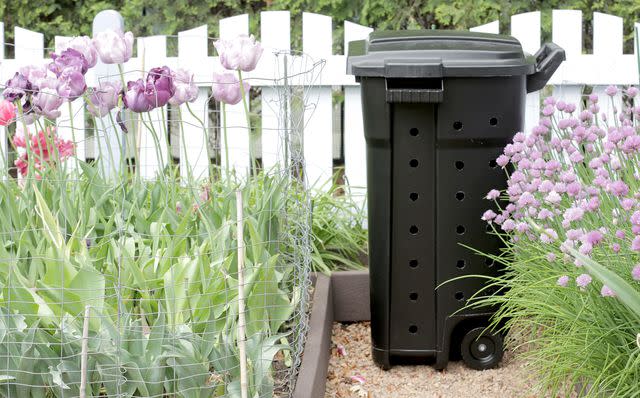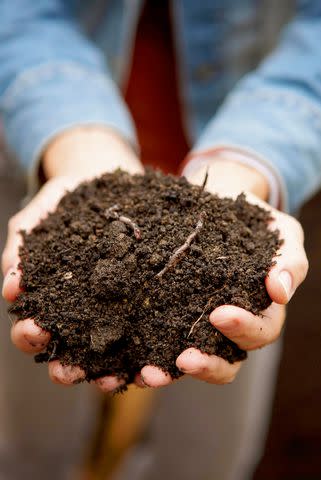Make This Super-Easy DIY Compost Bin in a Flash

Save money, benefit your garden, and help out the environment—all at the same time—with this simple DIY compost bin project.
Making your own compost is something anyone can do, whether you're a gardening beginner or a seasoned pro. It's a great way to recycle yard waste, like grass clippings and dry leaves, as well as vegetable peelings and other kitchen scraps. The nutrient-rich blend of decomposed organic materials works wonders for plants, either when spread around them, or mixed into the soil. But to get started, you'll need a compost bin. One of the easiest DIY ways to make a compost bin is to start with a trash can—something you may already have on hand—and drill several holes in it so your compost can get plenty of air and break down quickly. Then, you can tuck your new bin into a convenient spot and start adding organic material to it.

What You Need
Making this compost bin is simple. You only need three materials:
Lidded, outdoor trash can (between 30 and 40 gallons)
Power drill
Paddle drill bit
Step 1: Prep the Bin
If you're repurposing an old trash can, first thoroughly rinse it out. You don't want any lingering remnants of non-biodegradable materials in your bin. If you're using a brand-new bin, you can skip the wash, but remove any tags or packaging.
Step 2: Drill Holes
Attach the paddle bit to the drill. Starting a few inches from the lid, drill a hole into the side of the can. Space another hole approximately three inches from the first one. Continue drilling until you have rows of holes that span both the width and length of your bin. Repeat this on all sides.
Step 3: Clean Out Bin
Once again, thoroughly wash out the trash can to clean out any plastic shavings and bits that were created during the drilling process. Then you can put your new compost bin to work.

Composting Tips and Tricks
Especially when you're just getting started, it's important to feed your compost pile with the right materials and encourage them to start breaking down. Use these tips to help get your compost going, and create the best nutrients for your garden:
There are two types of composting: Hot and cold. Hot composting "fast-cooks" the materials with nitrogen, carbon, air, and water to create compost in only a few months. Cold composting simply requires collecting materials in a bin and letting them naturally decompose over the course of a year.
Good materials are the key to good compost. Fruit and vegetable scraps, eggshells, coffee grounds, grass clippings, dry leaves, finely chopped wood, shredded paper, straw, and sawdust from untreated wood all make great compost.
Bad materials can harm your pile, and eventually your garden. Don't try to compost any diseased plant parts, treated wood, animal feces, weeds that go to seed, or anything containing meat, oil, fat, dairy, or grease.
Before long, you'll be able to start putting your compost to work in your garden. Compost can help enrich soil if you're creating a new garden bed, but you can also spread it in a thick layer in an existing garden to add nutrients to tired soil. Your garden will reward you in bounty if you start feeding it with homemade compost.

